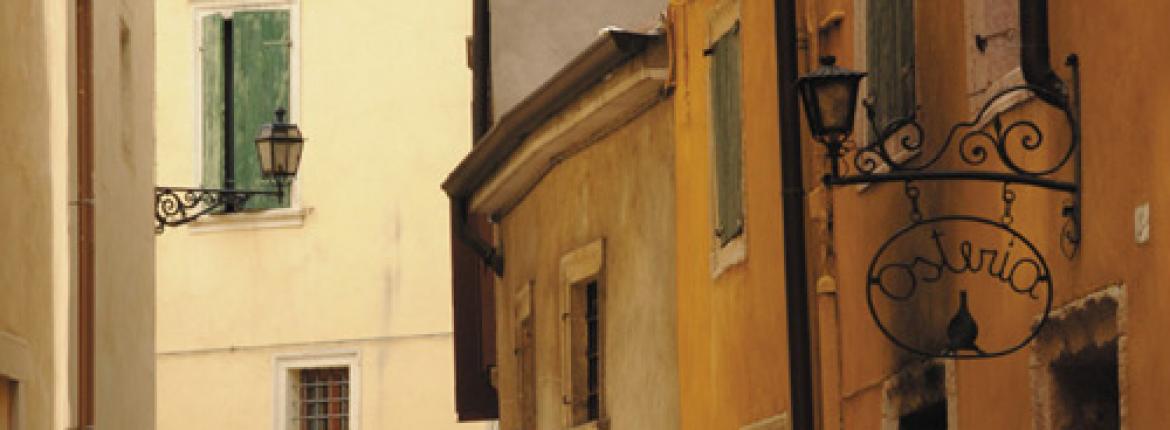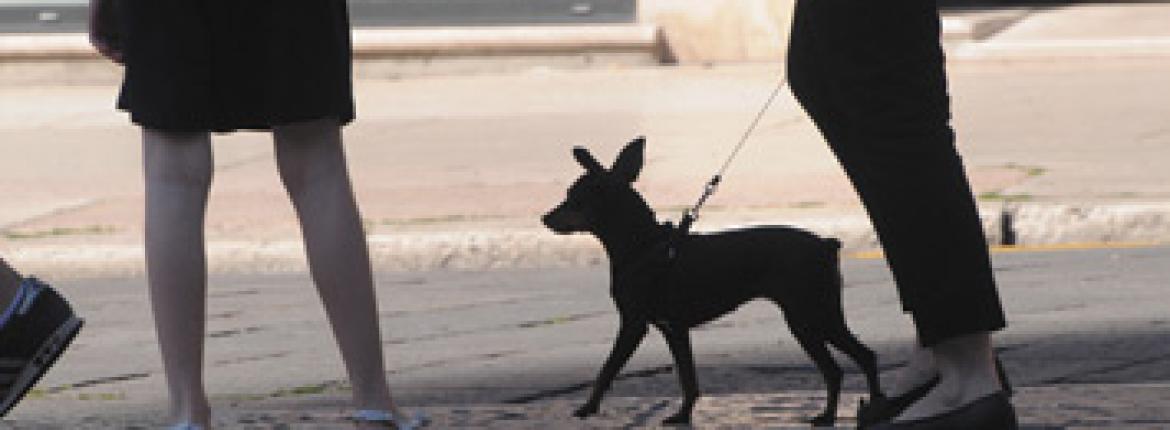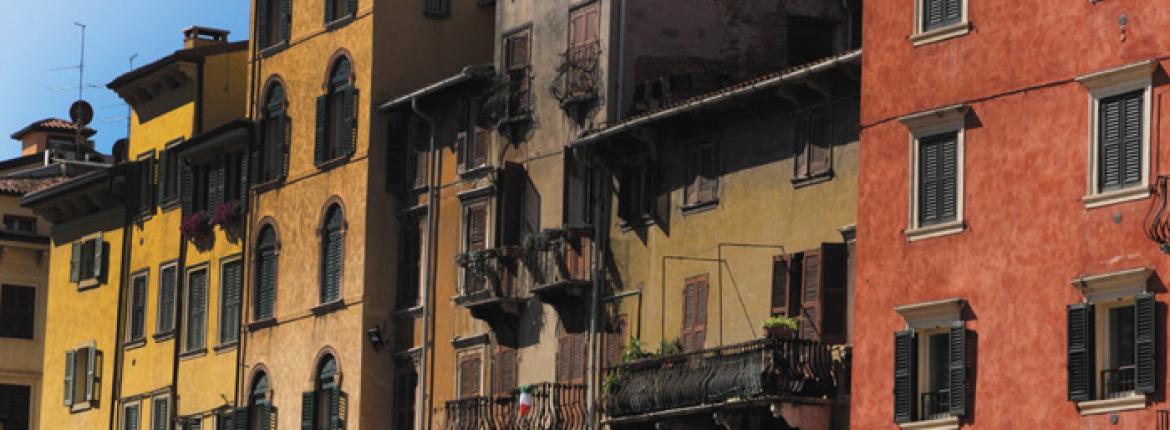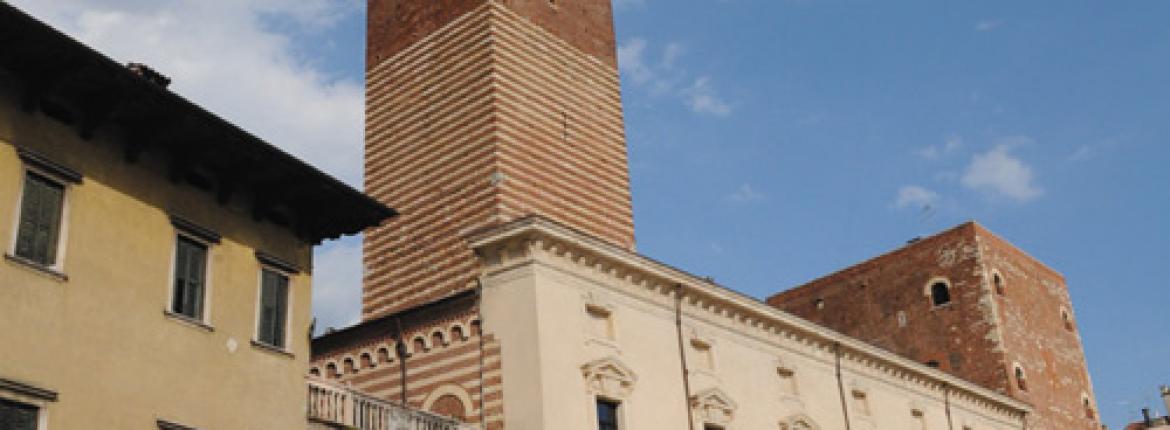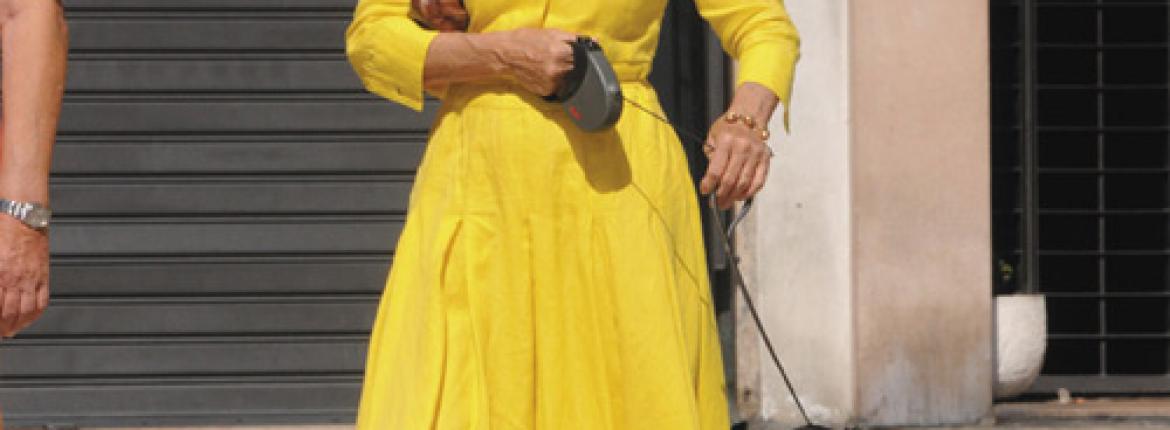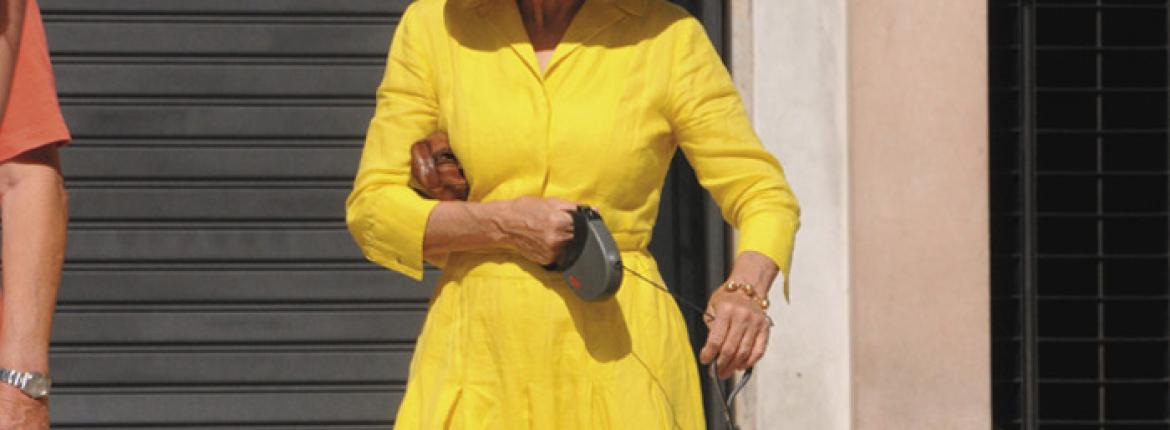 We arrived late afternoon to find the place we were staying – the Residenza Palazzo Negri – just inside the ancient city gates, in the heart of the old part of town.
We arrived late afternoon to find the place we were staying – the Residenza Palazzo Negri – just inside the ancient city gates, in the heart of the old part of town.
Straight away we walked to get our bearings, through to a central piazza buzzing with people and soaked in sunshine. Ancient buildings with frescoes and statues poking up into the blue sky surrounded the square, with classy shops, bars and restaurants below.
We walked to the city’s wide, rushing river then along to find the Roman Arena – bits of which date to the first century. There we were assailed by crowds readying for the opera, queuing with cushions and bottles and picnics. A six-night opera festival was in full swing; La Traviata was on that night, Aida the next, Romeo and Juliet, La Boheme and others more obscure on following days. We went to the arena during the day and watched the set being changed; cranes lifted huge, brightly painted props over the wall. Other sets, for other nights, lay scattered around outside the arena, roped off, waiting for their time on stage.
We passed the Casa di Giulietta – once home to a family that inspired Shakespeare. So many tourists were pushing to get in that we were caught in the tide of bodies and swept into the courtyard, complete with overhanging balcony and a statue of Juliet, worn shiny from years of stroking for luck in love. We went back when it was less crowded and it was worth it to see the interior of a 14th century home.
Up the hill on the Roman terraces, we watched the sun rise over the city, stretched out in the crook of the river’s elbow. Its yellows, ochres, creamy greys and bricky browns came to life; bell towers, gate towers, church steeples spiked the skyline. We waited until the bells started before wandering down.
I found Verona’s churches somehow softer and quieter than others in Italy. They had an elegance and beauty that stopped me, grabbed my heart, kept me still for awhile. It is a blessing that visitors of any persuasion can slip into these cool, stony places to contemplate the day.
More soul enrichment issued from the Scavi Scaligeri – an archaeological site with Roman and medieval Verona peeping through modern architecture – which houses the International Centre of Photography. Work by the famous Magnum photographer Henri Cartier-Bresson was showing – a treat only surpassed by nearby Galleria d’Arte Moderna’s exhibition of Marc Chagall.
Back in the Piazza delle Erbe, feeling suitably steeped in culture, we ordered wine and sat watching the day end, appreciating that for hundreds of years the very stylish people of Verona had been doing just that.
Reported by Kathryn Webster for our AA Directions Autumn 2012 issue

